Mexico City is just the beginning. Here are 11 other cities at risk of running out of water.
Jenny McGrath,Ellyn Lapointe,Jessica Orwig

- Mexico City may run out of drinking water by the end of this month.
- Water scarcity is a worldwide problem that many other countries are already facing.
Mexico City is on the brink of a water catastrophe. Experts predict that the city of 8.8 million people could run out of drinking water this month.
But Mexico City is not the first city with a water crisis and it won't be the last. As global temperatures rise, it disrupts the atmosphere's natural circulation of water on Earth — what's called the hydrological cycle.
"With every degree of global warming, the hydrological cycle will also intensify leading to more water crises," Aditi Mukherji, director of the Climate Change Adaptation and Mitigation Impact Action Platform of the CGIAR, told Business Insider.
But Mukherji said the biggest factor that makes a city vulnerable isn't climate change, it's water management.
"It's not so much about the absolute quantity of the water per se, but it's about how the available water is distributed," she said, adding that "water scarcity at the end of the day boils down to issues of policies and governance."
Here are 11 other cities at high risk of running out of water. Many are located in the 25 most water-stressed countries worldwide, according to the World Resources Institute.
"Even a short-term drought puts these places in danger of running out of water and sometimes prompts governments to shut off the taps," Liz Saccoccia, a water scarcity associate with WRI, told Business Insider via email.
Limassol, Cyprus
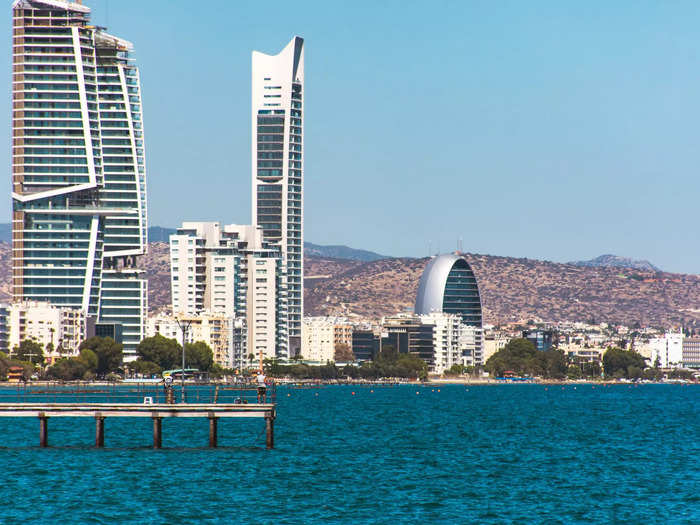
Population: ~235,000
A drought is drying up dams and reservoirs on the island Cyprus this year. Near the city of Lissamol, the island's largest dam is dropping to a third of full capacity, The Cyprus Mail reported.
The sunny island is a popular tourist destination. It's also one of the countries most at risk for extreme water stress due to droughts and a limited water supply.
Droughts have caused water shortages before, NBC News reported. In 2018, officials realized the desalination plant that supplies Limassol needed to increase its capacity by 50% to make it through rainless stretches.
With droughts becoming more frequent, the island now relies on these desalination plants for most of its drinking water. However, it's a costly solution that takes a toll on the environment. Finding land on the island to construct new plants is also proving difficult.
Muscat, Oman
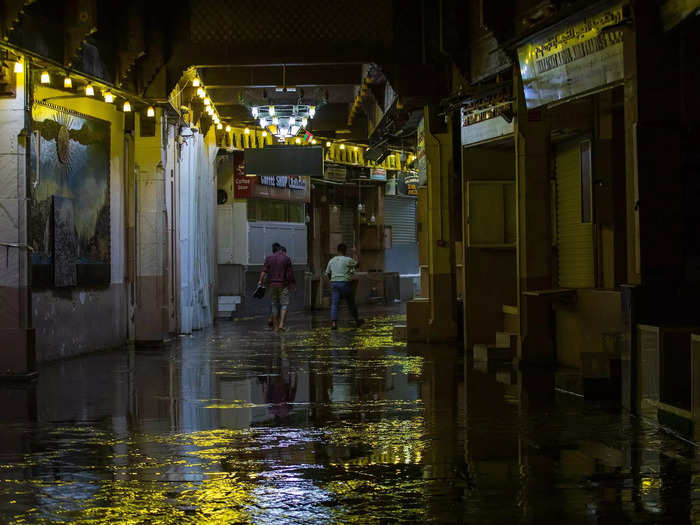
Population: ~1.7 million
Most of Oman's drinking water comes from desalination plants. But these plants are susceptible to red tides, an algal bloom that contains harmful toxins.
One desalination plant just outside of Muscat, Oman's capital, had to temporarily stop production in 2023 due to an outbreak, the Muscat Daily reported. The water service asked customers to limit water use and tapped into emergency reserves.
As global temperatures climb, it could lead to more frequent algal blooms, and Oman has been getting warmer over the past couple of decades. One estimate predicted its heat waves could last nine months of the year by 2100. In 1990, they typically lasted less than 15 days.
While the region's rainfall is expected to decrease by 2080, climate change is also causing intensified downpours. A recent deluge killed 19 people in the country and interrupted water and wastewater systems.
Beirut, Lebanon
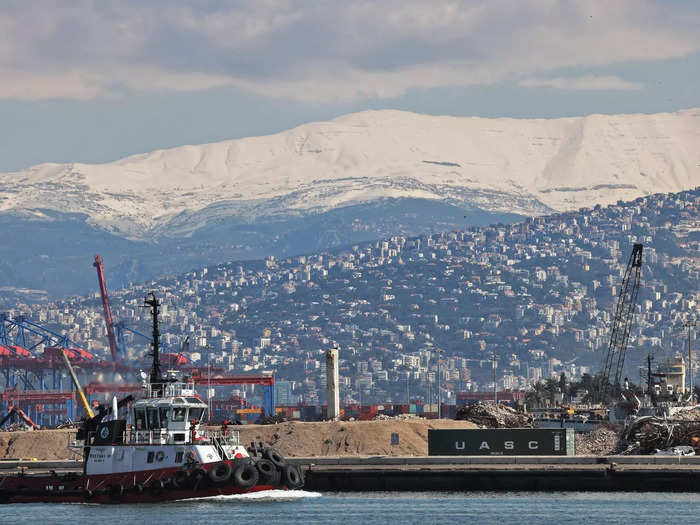
Population: ~2.4 million
The 2020 explosion at a Beirut port caused billions in damage and escalated Lebanon's economic crisis. Water facilities faced steep fuel prices to power treatment plants.
As a result, UNICEF warned in 2021 that 4 million people across the country risked losing access to clean water.
While areas with Syrian refugees were the most vulnerable, the situation in Lebanon's capital city, Beirut, was also critical, Al Jazeera reported in 2021.
Currently, many of the country's facilities are old and in need of repair. An estimated 40% of the water they treat is lost to leaks and people illegally tapping into the supply.
In addition to infrastructure issues, the area has a limited source of fresh water. The Bisri Dam was supposed to offer a fix. However, environmental, archaeological, and other concerns made the project controversial, The LA Times reported in 2021.
The World Bank pulled funding from the project in 2020, leaving it in limbo and jeopardizing reliable water access for 1.6 million people in and around Beirut.
Kuwait City, Kuwait
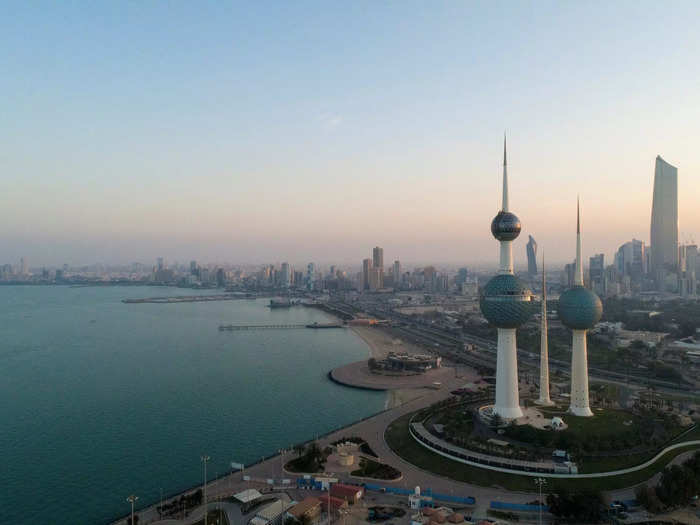
Population: ~3.3 million
Most of Kuwait's growing population lives in its capital, Kuwait City.
The country has never had much fresh water. There are no major rivers or lakes, and most of its groundwater is brackish or salty.
To supply drinkable water, the country uses desalination plants to remove salt from seawater. They provide 90% of Kuwait's industrial and residential water.
However, Derek Vollmer, director of Waterscapes at WWF, said desalination isn't a long-term solution to chronic water shortages.
Kuwait's desalination is enormously expensive and emits planet-warming greenhouse gases. Trying to supply more and more water to a growing population without conservation efforts is "unsustainable," according to a recent research article in the Water and Environment Journal.
Johannesburg, South Africa
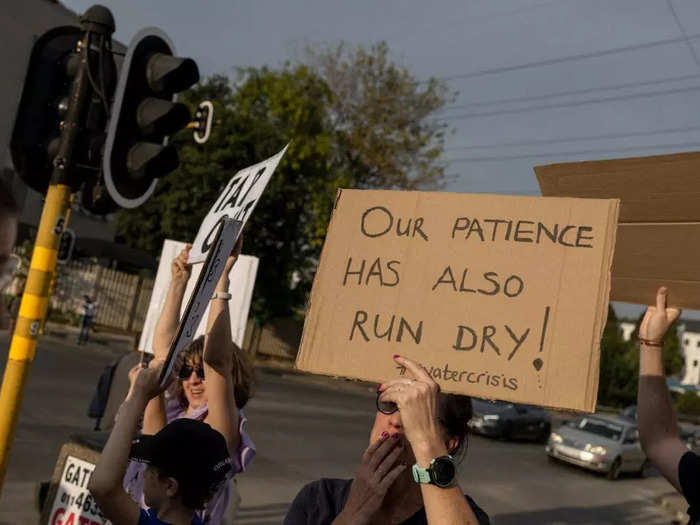
Population: ~5.5 million
It's not just Mexico City's taps that are running dry. Earlier this year in Johannesburg, residents protested against a water shortage that's left roughly half of the 5.5 million residents without running water or suffering water shortages for weeks, NPR reported.
South Africa's largest city gets most of its fresh water from the Vaal Dam, which holds more than 680 billion gallons of freshwater. In March, at the time of these protests, authorities said that South Africa's dams were full, CNN reported. And yet, the water supply to Johannesburg residents has been intermittent at best, with some homes going without water for five to seven days at a time, a resident told CNN.
The crisis stems not from a dwindling water supply, but from crumbling infrastructure, lack of maintenance, government corruption, and a growing population, CNN reported. Johannesburg Mayor Kabelo Gwamanda has mostly denied a water crisis exists, and blames shortages on surging demand due to record-breaking heat and freak events like a lightning strike at a water pump station in early March, NPR reported.
Bogotá, Colombia
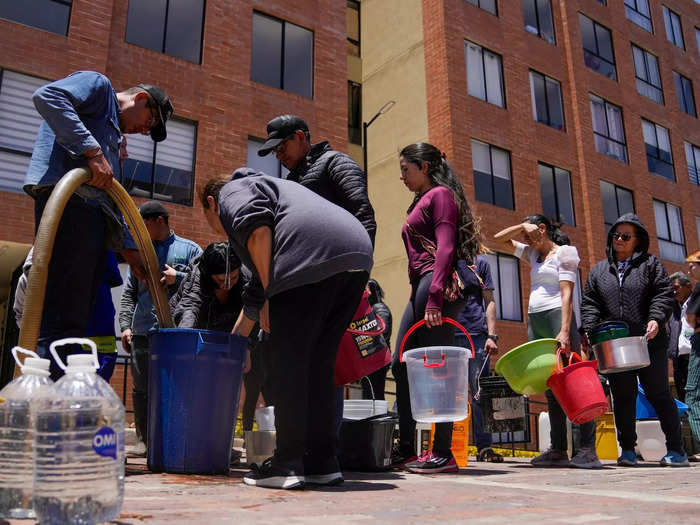
Population: ~7.1 million
Last month, Vollmer visited Bogotà, where he's worked on water projects for several years. One reservoir was lower than he'd ever seen it.
Despite the lush forests surrounding the area, the city is in the midst of a water crisis. "There are occasional droughts, and there wasn't enough long-term planning for their water supply," Vollmer said.
In April, the city began rationing water usage in response.
While the current problem is El Niño-driven, AP News reported, the ecosystem that supplies 80% of the city's freshwater is in trouble. Called the páramos ecosystem, "it's made up of plants that kind of act like sponges," Vollmer said. The water the plants pull into the root system then trickles into reservoirs.
However, this ecosystem seems particularly vulnerable to rising worldwide temperatures, according to recent Penn State research. The páramos are in danger of shrinking by as much as half within the next 50 years.
Cairo, Egypt
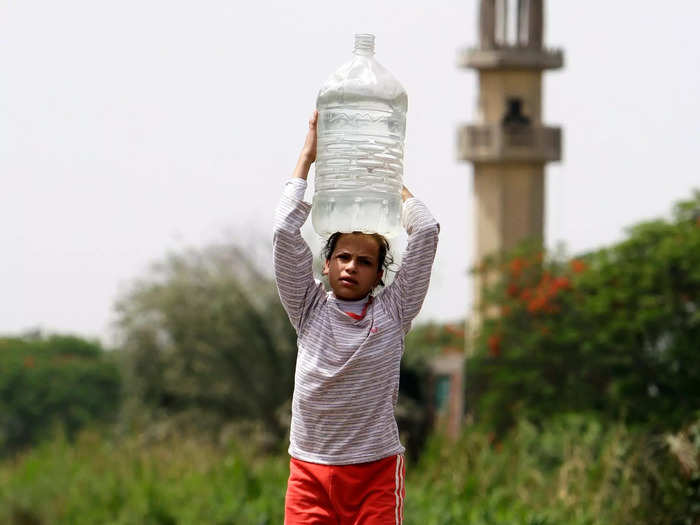
Population: ~9.5 million
Cairo's population has more than doubled in the last 40 years, straining its water supplies.
The government has had trouble providing poorer and rural communities access to drinkable water and has asked people to have fewer children to prevent further stress on its resources. But that won't solve the current water crisis.
During the summer, Cairo frequently faces water shortages. While upscale areas often have their water quickly restored, poorer neighborhoods sometimes lose access for weeks, one researcher found.
Most of the city's freshwater for irrigation and drinking comes from the Nile — the lifeblood of Egypt. But it's also full of heavy metals and microplastics.
Meanwhile, Ethiopia is building a hydroelectric dam on the Blue Nile — a river that feeds into the Nile, delivering over half of Egypt's water. Egyptians are worried blocking the Blue Nile's flow could further reduce their water supply.
By 2030, Egypt may need to import more water than it takes from the Nile, something the country has never faced before, according to the Carnegie Endowment for International Peace.
Jakarta, Indonesia
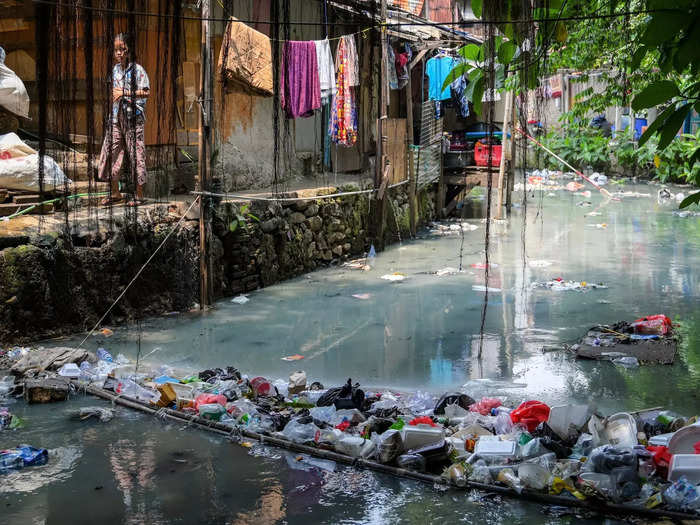
Population: ~10.6 million
Jakarta faces the Java Sea and experiences drenching monsoons. "But they also have water shortages," Vollmer said. That's because of pollution and contamination.
In 2021, seven out of 10 households in Indonesia had E.coli-contaminated water, according to the World Health Organization.
With over 10 million people living in an area only a little larger than Tucson, Arizona, it's difficult to keep Jakarta's rivers clean.
Nearly 20% of the island city's garbage finds its way to the waterways, The New York Times reported in 2016.
Meanwhile, Java, the island where Jakarta sits, is facing rising sea levels, which causes more floods. In turn, more debris ends up in the rivers and canals, worsening contamination.
Lahore, Pakistan
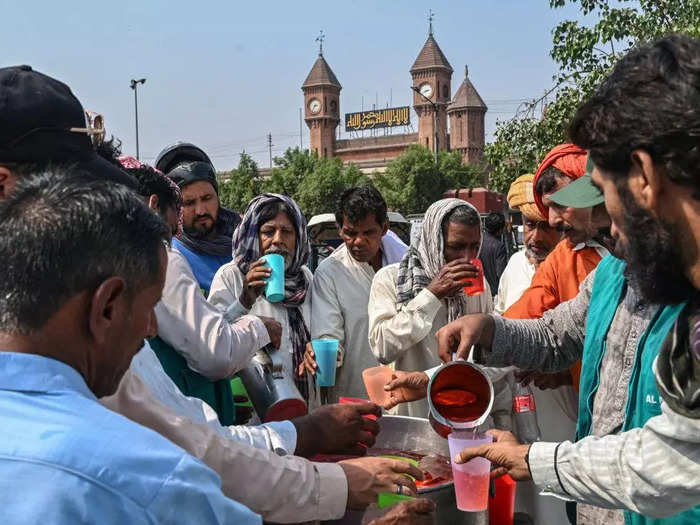
Population: ~14 million
In late May, hundreds of people in Lahore, Pakistan were treated for heatstroke as temperatures topping 120 degrees Fahrenheit scorched the city, Euronews reported.
Lahore's chronic water shortage makes heatwaves like this one all the more deadly. Pakistan's second-largest city, home to over 14 million people, gets fresh water from its groundwater supply. But over the last 50 years, groundwater levels have been dropping by roughly 1.6 to 2.6 feet per year.
Meanwhile, increased rainfall driven by climate change has contaminated water supplies, putting even more strain on the country's freshwater resources, according to WWF.
As a possible solution to its water shortage, the city of Lahore is attempting to divert excess rainwater into the groundwater supply with managed aquifer recharge, which helps rainwater seep down to the water table. It's too soon to tell whether, or not, this will be effective.
Beijing, China
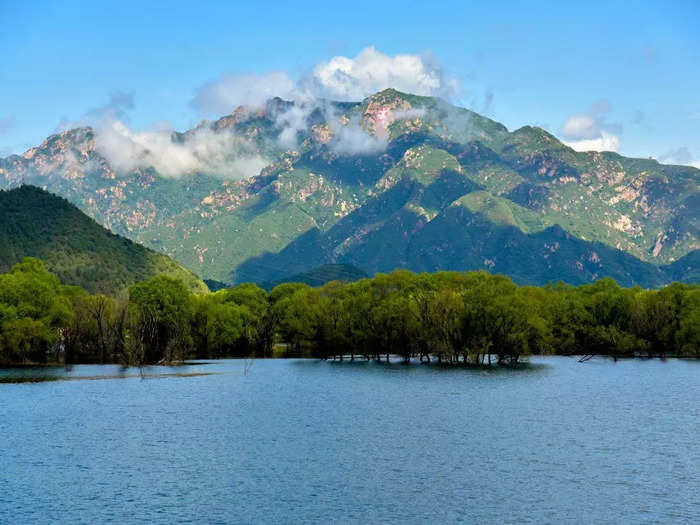
Population: ~21.5 million
China's northern, capital city of Beijing has faced severe water shortages for years. The BBC reported in 2018 that city residents received about 38,000 gallons of fresh water per year — far less than the 132,000 gallons per year that the UN defines as severe water scarcity.
Climate change is partly to blame. Warming temperatures have led to fewer summer monsoons in China's northern and inland areas and more unreliable rainfall. In turn, this has created long-lasting dry spells like the city's 116-day drought from October 2017 to February 2018.
On top of that much of China's available freshwater is polluted. As of 2024, nearly half of the country's population does not have access to water that's safe to consume, and roughly 90% of the country's groundwater is contaminated by human and industrial waste, Earth.org reported.
Delhi, India
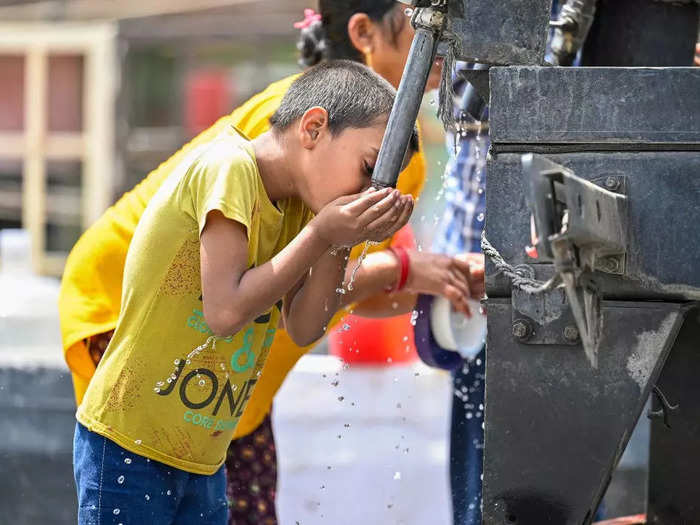
Population: ~33 million
In May, Delhi suffered record-breaking heat, with temperatures climbing as high as 120 degrees Fahrenheit, the Hindustan Times reported.
This heat wave is pushing the city's water resources to the brink, and the Delhi government stated that they'll issue a fine of 2,000 rupees (roughly $24 USD) to anyone found using water for construction, washing their car, or overflowing water tanks.
A 2023 report from Harvard University found that 18% to 26% of Delhi's residents don't have access to piped water, and an estimated 29% don't have water in their households. People living in "unplanned colonies" — informal settlements built on land that isn't zoned for housing — are most impacted by these trends, the report stated.
India is among the most water-stressed countries in the world. Although it has 18% of the world's population, it only has 4% of its water resources. Estimates vary but anywhere from tens of millions to over 100 million Indians lack access to safe drinking water.
The country relies on the summer monsoon to replenish their water supply, but climate change is making it unpredictable, putting more stress on an already strapped system. Additionally, lack of regulation, over-privatization, general neglect, and government corruption have created a dire water shortage throughout the country, SIWI reported in 2018.
Popular Right Now
Popular Keywords
Advertisement